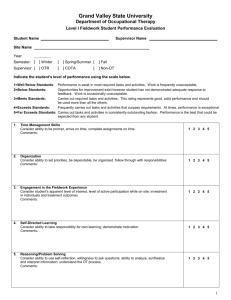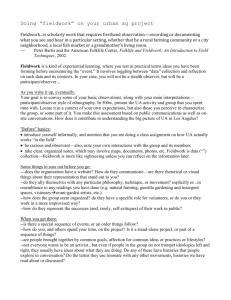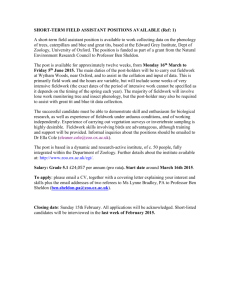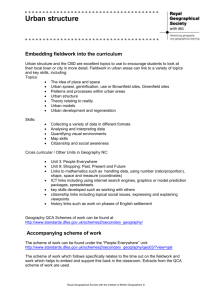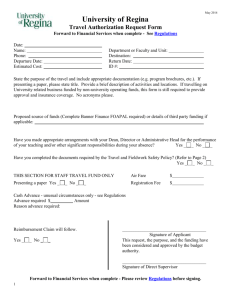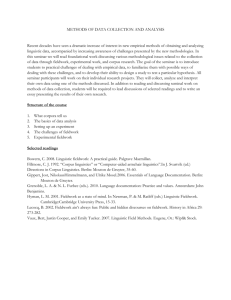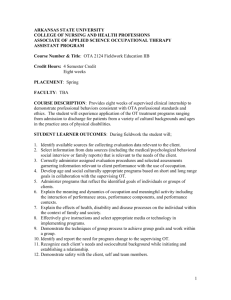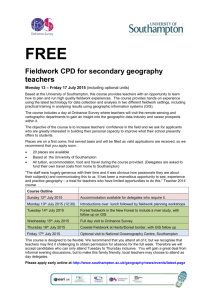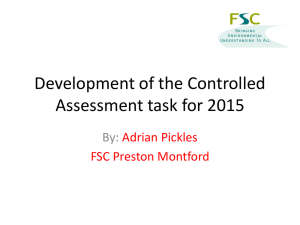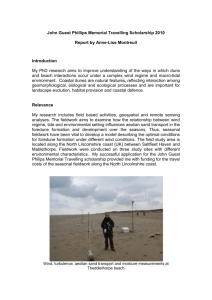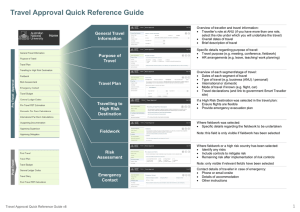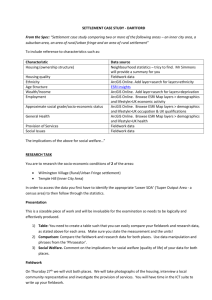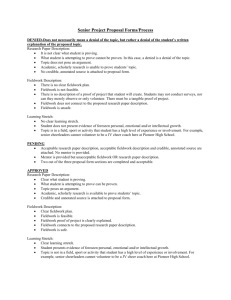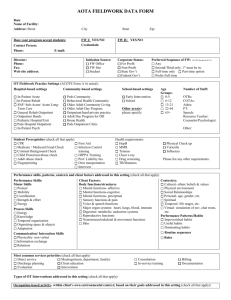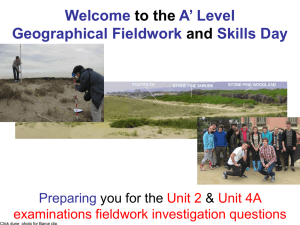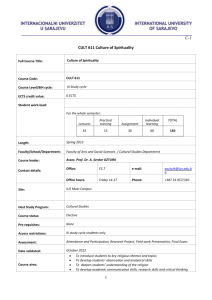FSC Fieldwork Round
advertisement
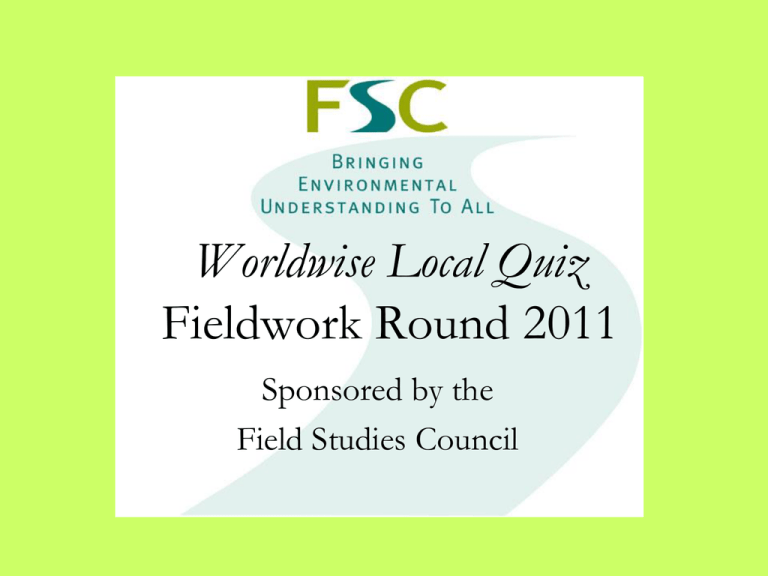
Worldwise Local Quiz Fieldwork Round 2011 Sponsored by the Field Studies Council Instructions • There are 10 multiple choice questions all somehow connected to fieldwork. • Answer each question in turn – consulting with other members of the team. • The questions generally get harder as you move through the quiz. • GOOD LUCK! Question 1 Q: What is the habitat or environment that these students are studying ? a. A Coastal woodland sand dunes b. A sand dune c. A shingle beach d. A saltmasrh www.field-studies-council.org Question 2 Q: A student has used a GPS system to locate themselves precisely at their fieldwork sites. What do the initial GPS stand for? a. Geographical Prediction System b. General Position Spatially c. Global Positioning System d. Geographic Calculating the Precise totalSystem amount of sun www.field-studies-council.org Question 3 Q: This equipment is commonly used for fieldwork whilst working in a river. What are the plastic oranges used for? a. They are used to measure the speed of the river – they work as floats b. They measure the discharge of the river – how much water is flowing c. They help establish stream surface gradient by rolling along the river’s surface d. They are used to work out the density of the water www.field-studies-council.org Question 4 0m 20m Q: Which of the following terms best links these three pieces of equipment that are often used in fieldwork a. Analogue b. Digital c. Inductive d. Qualitative www.field-studies-council.org Question 5 Q: Four students are asked to describe what they understood by the idea of a fieldwork ‘interview’. Which of their answers is the clearest and most accurate do you think? a. A series of extended questions that are asked in an informal discussionstyle format b. Doing an accurate and reliable survey of something or some people within a population c. A number of short (closed) questions and the answers are written onto a clipboard d. A single question which forms part of a bigger and more complex survey framework www.field-studies-council.org Question 6 Q This is a line along which the diversity of different species have been measured in this sand dune ecosystem. Lines along which surveys such as this are taken, are called what? a. Transects b. Survey lines c. Negative, Quadrats moderately strong d. Plant research routeways www.field-studies-council.org Question 7 Q: This is an ‘app’ for the iPhone. How could this particular app be used to assist in fieldwork? a. To give and accurate 6-figure OS grid reference to locate fieldwork sites b. Using the built in light-sensor to measure and record sunlight c. Using the phone to work out the vertical height drop between sites d. Using the movement detector in the phone to act as clinometer to measure slope www.field-studies-council.org 02 03 76 Question 8 Outer zone of CBD Core of CBD 1km 75 Q: A geography student is mapping (or delimiting) the area of their local CBD, shown in the OS grid square above. Estimate the area of the core (BLUE) of the CBD. Note: ha = hectare 1ha = 1/100km2 or 100m x 100m a. 1 ha b. 5 ha c. ~15 hectares d. ~75 hectares www.field-studies-council.org Question 9 Q: The photo shows four different soils which have been tested to find their pH. Soil A is much more acidic than soil D. The chart indicates a pH of 5.0 and 7.0 respectively. But how many times more acidic is A than D? A a. 0.5x b. 2x c. 10x d. 100x www.field-studies-council.org D Question 10 1 2 3 Q: Which are the correct names (including spelling!) for the three types of graph 1-3 a. (1) Chloropleth, (2) kite diagram, (3) desire line map b. (1) Kite graph, (2) choropleth, (3) flow line map c. (1) Kite graph, (2) chloropleth, (3) flow line map d. (1) Isoline graph, (2) choropleth, (3) desire line map www.field-studies-council.org Question no. 1 2 3 4 5 6 7 8 9 10 Answer c c a b a c d c d b

